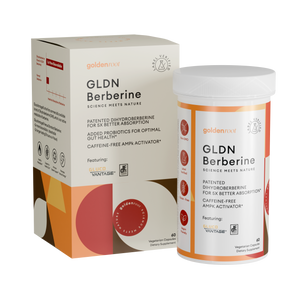A high-protein diet is something more than a weight‐loss booster for GLP-1 users. It helps preserve lean muscle and maximize medication benefits.
While the baseline RDA (0.8 g/kg) covers basic needs, most GLP-1 patients benefit from 1.2-1.5 g/kg daily, tailored to body weight, activity level, and treatment goals.
Spreading protein across meals, choosing a balance of animal and plant sources, and incorporating shakes or supplements can make hitting these targets practical and gut-friendly.
Moving forward, you’ll also learn how to monitor kidney health + work with your healthcare team + and apply meal-planning strategies to keep you feeling energized and fully supported by your GLP-1 therapy.
Related products:
Why Protein Matters on GLP-1 Therapy
Protein is more than a calorie source; it’s essential for repairing tissues, building muscle, and regulating appetite.
In people using GLP-1 agonists, adequate protein helps offset the risk of muscle loss that can accompany weight loss, supporting metabolic health and maintaining strength.
Read more: Magnesium for GLP-1 Therapy (Boost Recovery, Sleep Quality & Metabolism)
How GLP-1 Impacts Appetite and Digestion
GLP-1 drugs slow gastric emptying and reduce hunger signals, which can lead to smaller meal volumes and occasional GI side effects like nausea or bloating.
Prioritizing protein, which is more satiating per bite, helps you feel full on less food and minimizes digestive discomfort by focusing on nutrient‐dense, low‐volume options.How Much Protein Do You Need on GLP-1 Medications?
Most adults meet basic needs with 0.8 g of protein for each kg of weight daily, but patients on GLP-1 therapies often benefit from higher intakes (typically 1.2-1.6 g/kg) to preserve lean mass during weight loss and counteract reduced appetite.
Practical targets start at a minimum of ~60 g/day, scaling up to 1.5-2.0 g/kg for those managing greater weight.
“These recommendations should be personalized based on body weight, activity level, kidney function, and ongoing monitoring with your healthcare team.”
Read more: What Effect Do GLP-1 Drugs Have on Bone Health and Muscle?
General Protein Guidelines (g/kg)
For general health, the Recommended Dietary Allowance is 0.8 g per kilogram of body weight (about 0.36 g per pound).
However, this minimum helps prevent deficiency & it’s not optimized for muscle preservation or active weight loss interventions on GLP-1 therapy.
Adjusting Intake for Weight, Activity, and Goals
Clinical guidance for GLP-1 patients recommends between 1.2 and 2.0 g/kg per day, depending on activity and desired outcomes (e.g., 1.5 g/kg for those focused on lean mass retention).
Many experts suggest at least 60 g daily as a floor, with higher intake (up to 1.5 g/kg) beneficial for heavier individuals or those engaging in resistance training.
Read more: how long does it take for magnesium to work
Choosing the Best Protein Sources on GLP-1 Therapy
Means balancing amino acid completeness + digestibility + micronutrient content, and practical considerations like volume and GI tolerance.
Animal proteins & Plant proteins! Digestibility scores such as PDCAAS and DIAAS highlight that animal proteins typically exceed 100% on DIAAS (e.g., whey isolate 1.09).
At the same time, many plant sources range from 0.58 to 0.97, reflecting differences in amino acid availability and gastric breakdown.
Below, explore each category and practical picks to optimize protein intake on GLP-1 therapy.
Read more: GLP‑1 Drugs for Weight Loss & Diabetes (How They Work, Benefits, and Side Effects)
Animal vs. Plant Proteins
-
Animal proteins (e.g., poultry, fish, eggs, and low-fat dairy) deliver all nine essential amino acids in concentrated form, supporting muscle synthesis efficiently.
-
Plant proteins (e.g., legumes, tofu, tempeh, quinoa) are rich in fiber and micronutrients; combining varied sources, like beans with rice, ensures a complete amino acid profile.
Supplements and Protein Shakes
When meals fall short, protein powders and ready-to-drink shakes bridge gaps without adding volume.
- Whey isolate is popular for its rapid absorption and minimal lactose, easing digestion on GLP-1s.
- Plant-based powders (pea, rice, soy) offer alternatives for those with dairy sensitivity.
Practical Strategies to Meet Your Targets.
Practical Strategies to Meet Your Protein Targets
-
Dividing your daily protein into four roughly equal portions (≈0.4 g/kg per meal) helps maximize muscle protein synthesis and keeps you full without overloading your slowed digestion on GLP-1s.
- Pairing protein with fiber & healthy fats further stabilizes blood sugar and satiety.
- Protein-rich snacks (e.g., Greek yogurt, hard-boiled eggs, edamame) between meals stave off hunger, and adequate hydration supports digestion and metabolic processes.
Finally, don’t forget regular check-ins on tolerance and kidney markers to keep your plan safe and effective.
Read more: Can GLP-1 Drugs Be Taken Orally? Unpacking the Options for Diabetes and Weight Management
Distribute Protein Intake Across Meals
Here’s a quick overview of the key meal-planning principles:
-
Divide protein evenly: Aim for 20-40 g per meal to maximize utilization.
-
Lean and dense choices: Include eggs, Greek yogurt, or smoked salmon at breakfast; grilled chicken or tofu at lunch; fish, lentil soup, or lean beef at dinner.
-
Low-volume protein foods: Cottage cheese, edamame, or protein-fortified smoothies pack calories without excessive bulk, reducing GI stress from slowed digestion.
Protein-Rich Snacks and Timing Tips
-
Small, protein-rich snacks (e.g., hard-boiled eggs, hummus with veggies, cheese cubes) stave off hunger and stabilize blood sugar between meals.
-
Scheduling a mid-morning and mid-afternoon snack can help distribute intake without overwhelming the digestive system.
Read more: is creatine safe while breastfeeding
Special Considerations When Increasing Protein on GLP-1
Before diving into specifics, here’s what to watch as you fine-tune your protein plan on GLP-1 therapy:
Monitoring Kidney Health
-
While higher protein is safe for most people, those with chronic kidney disease should aim closer to 0.8-1.0 g/kg and consult their physician before increasing intake.
-
Monitoring BUN and creatinine levels annually can ensure kidney function remains stable.
Collaborating with Healthcare Providers
-
A dietitian or endocrinologist can tailor protein targets to your unique medical history, weight-loss trajectory, and activity level.
-
Regular check-ins allow for adjustments in response to changes in body composition, workout intensity, or medication dose.
Read more: Who Should Think Twice Before Taking GLP-1 Drugs for Weight Loss?
Final Thoughts: Dialing in Your Protein for GLP-1 Success
Optimizing protein intake is a cornerstone of successful GLP-1 therapy. It fuels muscle preservation and supports metabolic balance.
By aiming for 1.2-1.5 g/kg per day (with at least 60 g as a starting point), diversifying your protein sources, and employing practical meal-planning tactics, you’ll harness the full power of your medication while nourishing your body.
Remember, the “right” amount varies: stay in tune with your hunger signals, work closely with your healthcare team, and adjust as you progress toward your health goals.



